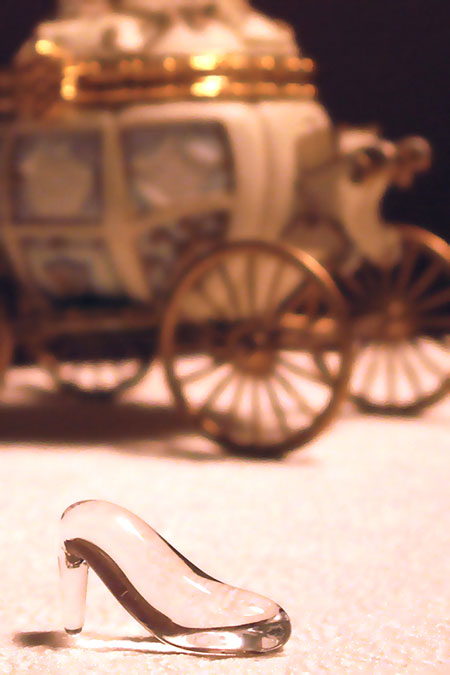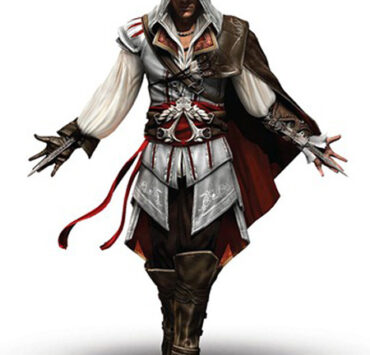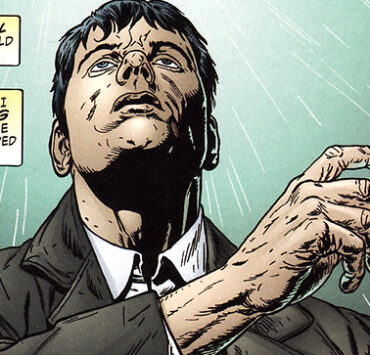Ever wondered who instilled the idea of Prince Charming into the mind of every young girl? Or how we ended up assuming that, come what may, we shall ‘live happily ever after’? The culprit is a seemingly harmless—yet integral—part of our lives. Fairy tales. What begins as an innocent first-time reading experience for every toddler, soon engrains in them stereotypical ideologies that have long existed in society.
Fairy tales have often been accused of being hegemonic and advocating the idea of male superiority. The girl is always expected to be a passive observer of any event. She simply hopes, prays, and wishes for her Knight in Shining Armour to come and rescue her on his white horse. Whether it was Sleeping Beauty, who let a hundred years pass before she was brought back to life, or Rapunzel, who sat locked in the tower till her Prince climbed in to save her—they all waited. The idea of female subordination stands out in all fairy tales, first to her father and then her prince.

Glass slippers, anyone?
A woman has always been asked to look her best while her partner (the opposite sex) is allowed to pass even in shoddy clothes. The question that comes to one’s mind is: Where and how did this practice begin? The answer is fairly obvious. For years, little girls who have followed these tales have fancied being magically transformed from their not-so-beautiful clothes (picked by their mothers), into voluminous evening gowns and pretty glass slippers, all in search of Prince Charming. Girls have been made to understand that a woman can never find her way out of any crisis situation and always needs to be rescued. And for that, she needs to look her best and play her part as the mute, unassuming, naïve victim.
Another aspect of fairy tales is their depiction of the villains in the story. Interestingly, most are—again—women. It is fair to say that these “harmless” stories end up propagating certain untruthful notions in the minds of children. Ideas of the forever-evil step mother, the wicked witch in the tall, pointed hat, or the cruel Queen who will not accept the poor protagonist as her son’s bride, have all originated from here. There are some who believe that the ‘evil characters’ are meant to strengthen a girl’s passage into womanhood. Whatever their purpose may be, what we are trying to advocate by creating such stereotypes remains unclear.
The real question in all this discussion about gender roles in fairy tales is the impact that they have on children, and hence on society. Aren’t we giving them the idea of a Utopian life, an idea that will cause them to face greater difficulties in their own lives to come? Because when the bubble bursts, there is no escaping reality. This is the stress that most people are unable to deal with, leading to over-expectations and then bouts of depression.
The psychological impact that Wilhelm Grimm’s or Charles Perrault’s creations have on children will always remain a grey area for social thinkers. Whether or not these tales about ogres and their beauties are a good influence on the young ones and their tender minds is a mindbender, but what can be deciphered is that beneath these stories lie deep meanings that reflect on society and the interpersonal relationships that people have.









Interesting read,Shoms. I think it is time new stories made their way into the formatory lives of children. Just the other day, I was watching a similar cover story done on some Bangla news channel,but of course it dealt with a different aspect. It was how our innate fears during our growing years, and even later, stem from the stories our mothers and grandmoms tell us, with the same intent -to instill fear in us to force us to do/not do something. Like you know —- eat this or the tiger will get you, don’t go there the ghost will get you etc etc. We don’t know how telling all this to a child affects his/her attitude in the identity forming years of growth. Glad that people, doctors and educationists alike, are waking up to this new side. Hopefully, we’ll have better tales to tell our kids.
As for the article, great job done there girl. Good to see you are taking this ahead, best wishes with that!
Poulomi – Very true. Its very interesting to study how the tales told to children have such a strong psychological impact on them, and how most of us chose to ignore it. Gender and sexuality stereotypes are things that really need to be dealt with a lot of sensitivity and most parents/teachers chose to ignore it.
Thanks so much for the encouragement!
Gender and sexuality stereotypes are reflected in fairy tales as well…sad isn’t it…we grew up on them and till date I love fairy tales. Life isn’t the same without magic and fantasy…gender stereotypes are unfortunately deeply rooted within the societal subconscious whether it’s saas-bahu soaps, mainstream media or hell, yes even fairy tales. Very good read, thanks Shoumeli. Through education and the right role models in society, things should start changing.
Blame Disney! Ol’ Walt probably knew full well the extent of damage his fare would wreck on modern society and must have had a laugh the whole while. He must have had the backing of the clergy who were happy to patronize media that would advocate such stereotyping and role play. If you ask me, monogamy is a norm that is peddled by religion since a certain someone came running down the hill with the holy grail and both genders have been suffering the indignity ever since. But it makes sense doesn’t it? The sexual repression that arises makes people easier to control. Most sexually liberated folk would want little to do with moralistic codes thrust upon them in the name of conformity and mediocrity. We grow up being conditioned by not just fairy tales but also parents and peers of that one single ‘Mr. Right’ or ‘the right girl’, that the uniqueness of an individual is overshadowed. Instead each gender resigns to playing the role to his/her best successfully killing the real character beneath. Break free..